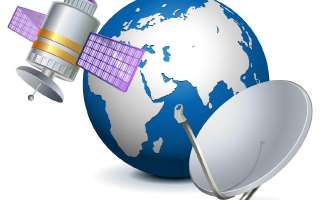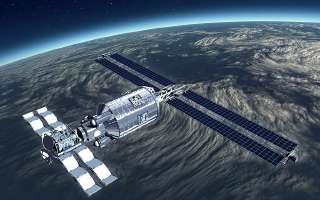8 items in this section. Displaying page 1 of 1
How Does Satellite TV Work?
Nine ‘o’ clock. It’s time for your favourite serial on television. Have you ever wondered how the same serial can be viewed by millions of people across the world? This is possible because of satellite television technology. It uses man-made or artificial satellites to send your favourite serial to your television set. But why do we need satellites for this purpose? How Does Satellite TV Work? The earth is round To understand this, we have to first take a look at the shape of our earth....
How do Satellites Stay Up?
Satellites orbit the earth because of the force of gravity. To understand why this happens and why the satellite does not get pulled in and fall, we have to understand what forces do. A force will change the motion of an object; it might speed it up, slow it down or change its direction. For example, if you are running and someone pushes you from behind, you speed up (the force is in the direction of your motion)....
Saraswati River in the Thar Desert
The vedas mention the mighty Saraswati river flowing down the Himalayas and then westwards towards Rajasthan. But Rajasthan is a desert. So where did this huge river, which the vedas say was bigger than the Ganga, disappear? It is widely believed that this river still flows under the Thar desert, though no one has been able to prove this for sure. Even the epic Mahabharata, written in 1000 BC, mentions Saraswati as the once-mighty river that was drying up....
The Dark Kingdom of Uranus
Named after the father of the Titans in Greek mythology, Uranus is the seventh planet in the solar system. It was first observed through a telescope by Sir William Herschel on March 13, 1781. Although Herschel wished to call the newly discovered planet Georgium Sidus (Georgian Star) for King George III of England, Johann Bode’s proposal of the name Uranus gained more acceptance over the years and finally became universal in the mid-19th century. The Uranian realm is a dark kingdom, so remote from the sun that daylight there approximates a total solar eclipse on Earth....
Which Galaxy is Visible to the Eye?
The sun we see everyday is just one of the thousands of stars we see at night. Such a huge collection of stars is called a galaxy. And the stars we see belong to a galaxy called the Milky Way. There are millions of galaxies in the sky, most of whom are hidden from our view. However, there are some galaxies which can be seen with the naked eye. The most famous and the brightest of these is the M31 or the Andromeda galaxy....
International Concern Over North Korea's Rocket Launch
Where: Pyongyang, North Korea April 5, 2009 : The Democratic Peoples Republic of Korea’s (North Korea’s) plans to launch a rocket had created a stir weeks ahead of the event. It was feared that the launch was actually a missile test. Japan, South Korea, and Alaska in the United States were all under threat if this was so. Finally, on Sunday, April 5, 2009, the Eunha-2 rocket succeeded in putting a satellite into orbit. South Korea, that has a long history of war with the North, called it a “reckless act”....
A 'Big Bang' in Earth's Orbital Space
Where: Orbital Space around Earth February 15, 2009 : An American and a Russian satellite collided over Siberia, Russia, on February 10, 2009. Five days after the event, there were reports that burning fragments of the wreckage were spotted over several American cities. The American satellite, Iridium 33, was a civilian communications satellite launched in 1997, and the Russian one, Kosmos-2251, was a non-functioning military communications satellite, launched in 1993. Both satellites weighed over 450 kilograms....
'Ibuki' : Japan's 'Green' Monitor Orbits the Earth
Where: Tokyo, Japan January 23, 2009 : A space centre in Tanegashima, a remote island about 970 kilometers southwest of Tokyo, today launched the first satellite designed to monitor carbon dioxide emissions. It is named ‘Ibuki’, which means ‘breath’. The satellite has sensors which can measure light reflected from earth, and gauge the density of carbon dioxide and methane. These two gases are the biggest contributors to global warming, Ibuki will circle the globe every 100 minutes, and will monitor the levels of carbon dioxide and methane from 56,000 locations for the next five years....
- ❮ Previous
- Next ❯




